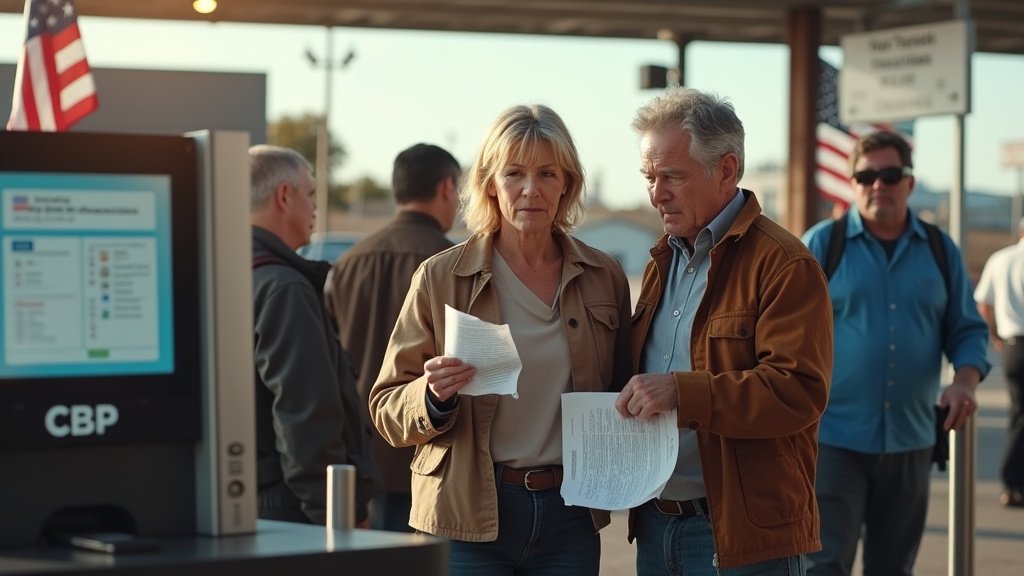As the winter travel season kicks into gear, many Canadian ‘snowbirds’ heading to the United States are encountering new, and often confusing, registration requirements at the US border. While a significant policy shift mandates registration for Canadians staying longer than 30 days, official statements confirm that fingerprinting for this specific group has been waived, though confusion and frustration persist.
The Evolving US Border Registration for Canadians
The new measures stem from a January 2025 executive order by President Donald Trump, titled “Protecting the American People Against Invasion,” which directed the Department of Homeland Security (DHS) to enforce existing immigration law requiring foreign nationals staying in the U.S. for 30 days or longer to register. This rule, which became effective around April 11, 2025, targets “aliens” aged 14 and older, applying to those who were not previously registered or fingerprinted during prior U.S. visa or work authorization processes.
Historically, Canadians have enjoyed a more streamlined entry process. However, the new directive means that for land border crossings, travelers who do not automatically receive an I-94 admission record upon entry are now required to register separately to avoid potential penalties, which can include fines and even prosecution.
Navigating the New Requirements: Registration and Biometrics
For Canadians entering by air or sea, an electronic I-94 form is typically issued, serving as proof of registration and exempting them from the new registration process. Similarly, those who have already obtained an I-94 form in previous entries are generally considered registered.
However, for those entering by land and not issued an I-94, the primary registration method recommended is online via U.S. Citizenship and Immigration Services (USCIS) by completing Form G-325R. This online registration for Canadians does not require fingerprinting.
Despite the official waiver on fingerprinting for Canadian nonimmigrants, confusion arises when travelers attempt to register directly at a U.S. land border. While technically possible, this route can lead to significant delays, secondary inspections, vehicle searches, and conflicting advice from U.S. Customs and Border Protection (CBP) officers. In these instances, travelers may be fingerprinted and photographed as part of the I-94 application process or for identity verification, incurring a $30 USD fee per person. The CBP One app is also mentioned as a tool for obtaining I-94 information, though its primary functions have shifted.
Behind the Policy: An Executive Order’s Reach
The enforcement of this long-standing immigration law marks a significant shift, particularly as it now consistently includes Canadians, a group previously often exempted. Immigration lawyers suggest this move is part of broader efforts by the Trump administration to tighten border security and enforce immigration laws, occurring amidst heightened trade and political tensions between the two nations.
Implications for Winter Tourism and Traveler Experience
Canadian snowbirds are a vital demographic for U.S. tourism, contributing billions annually to economies in states like Florida, Arizona, and California. The new, complex requirements have prompted frustration and concern among these travelers, with many encountering the rules for the first time this season. The situation has led to mixed signals and uncertainty at ports of entry, underscoring the need for travelers to be well-informed before their journey.
The trend of Canadians facing these new regulations highlights an evolving border dynamic. Travelers are advised to verify their I-94 status and understand the registration requirements to ensure a smoother passage and avoid potential penalties, especially as this news continues to develop across the US and Canada.






